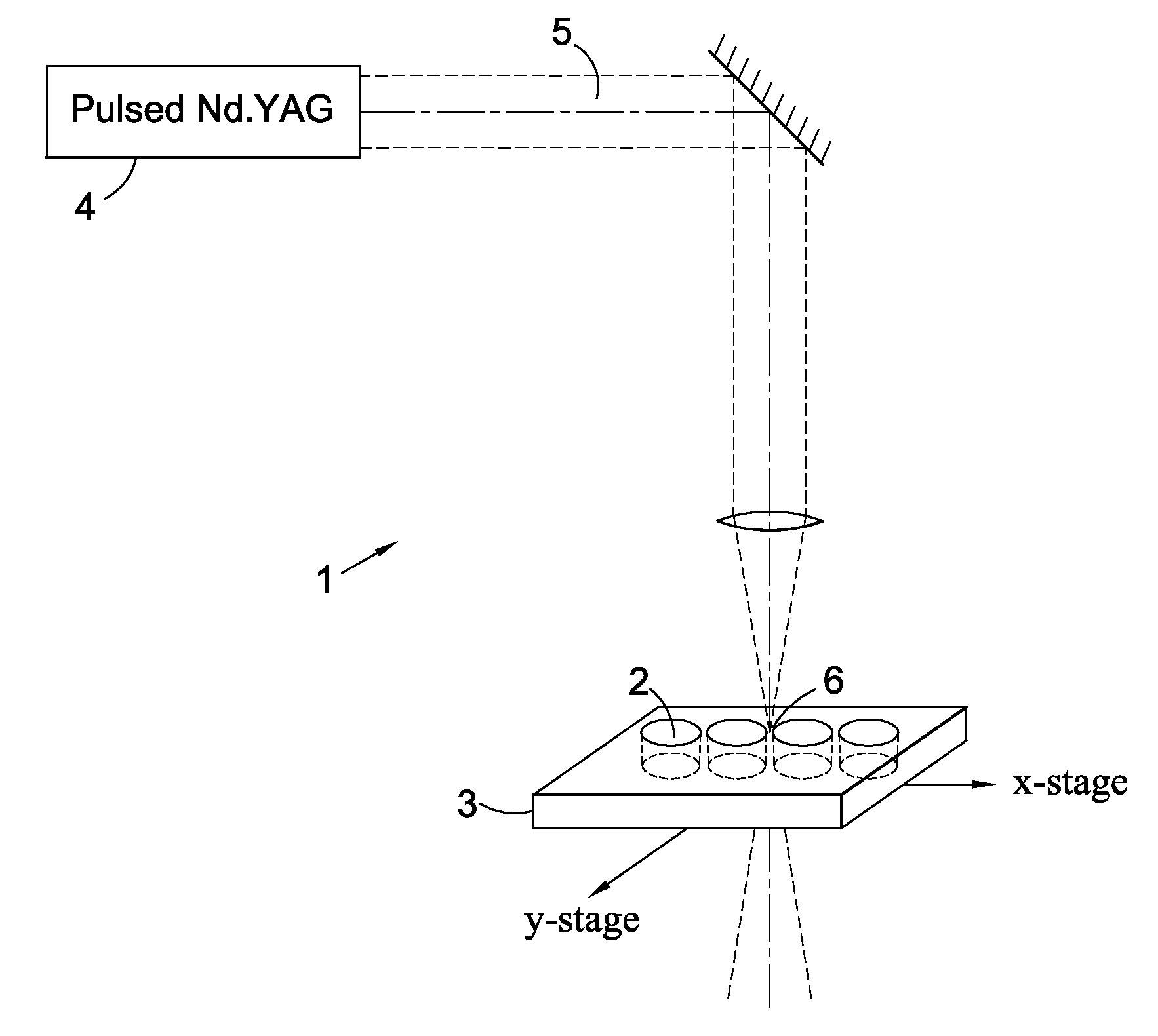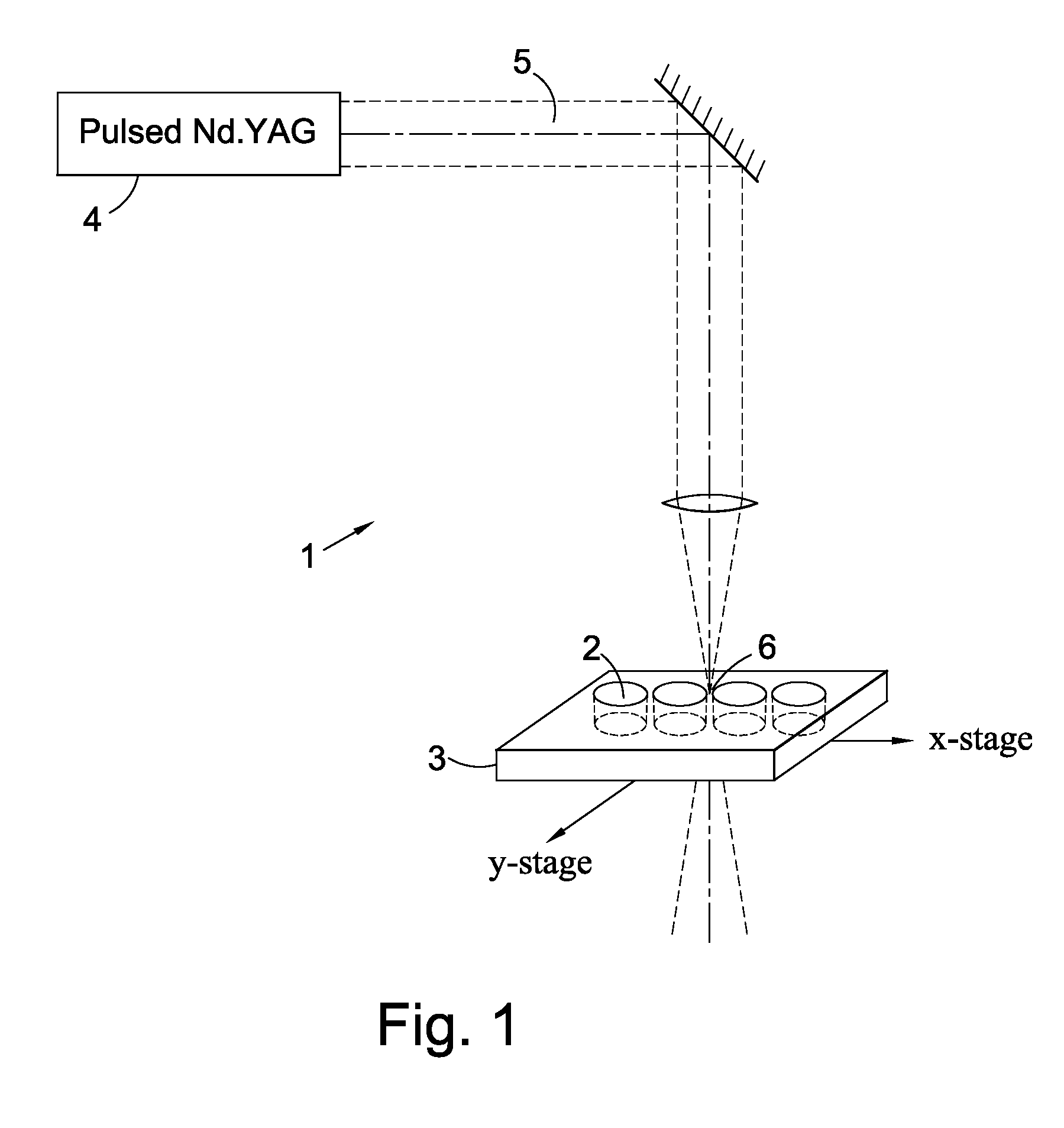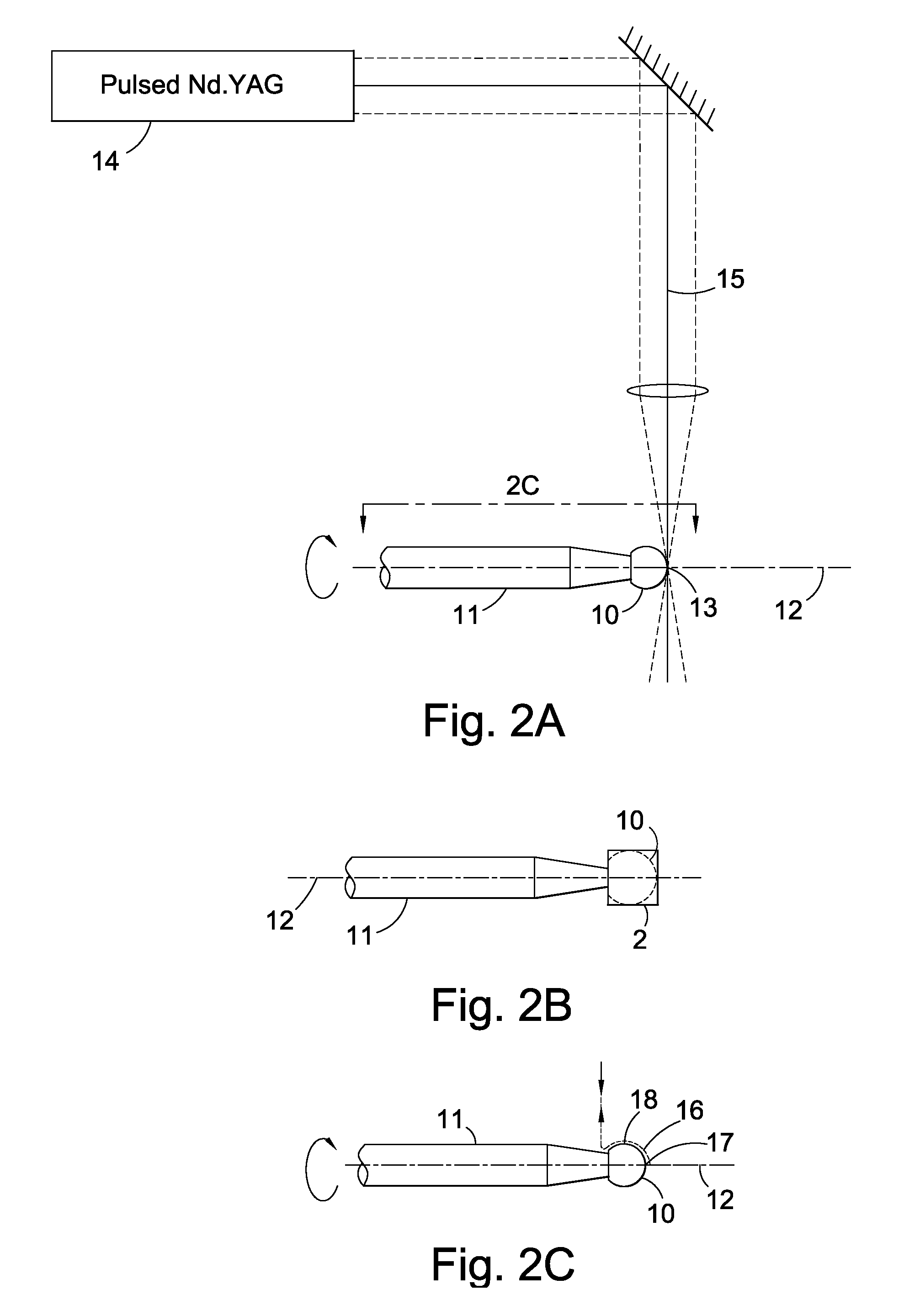Single crystal diamond elements having convex surfaces and methods of its fabrication
a technology of convex surfaces and diamond elements, which is applied in the direction of manufacturing tools, instruments, lenses, etc., to achieve the effects of low radius of curvature, high accuracy and high quality
- Summary
- Abstract
- Description
- Claims
- Application Information
AI Technical Summary
Benefits of technology
Problems solved by technology
Method used
Image
Examples
examples of embodiments
Example 1
Super-Hemispherical Synthetic CVD-Grown Single-Crystal Diamond SIL with 8-Sided Pavilions
[0126]A super-hemispherical SIL was made from CVD-grown synthetic single-crystal diamond. A CVD grown diamond, approximately 4.5×4.5×3 mm in size, was first sawn into plates of approx. 1.2 mm thick. One plate was then polished flat on one side and mounted onto a graphite carrier plate and placed on an XY translation stage in the focus of a pulsed Nd:YAG cutting laser. Pulse energy was 1.2 mJ in a 150 ns pulse with a pulse repetition rate of 4000 pps (pulses per second). The XY-stage then executed a circular motion with diameter 1.3 mm so that a cylindrical disc was cut out of the plate with diameter 1.3 mm.
[0127]Subsequently the disc was cleaned to remove any laser residue and brazed with the polished side onto a molybdenum rod which was 20 mm long and 3 mm in diameter with a eutectic alloy of gold and tantalum. The axis had a tapered end such that at the tip where the diamond was solde...
example 2
Hemispherical Synthetic CVD-Grown Single-Crystal Diamond SIL
[0133]A hemispherical SIL was made from CVD-grown synthetic single-crystal diamond. A CVD grown diamond, approximately 3×3×2.8 mm in size, was first sawn into plates of approx. 0.8 mm thick. One plate was then polished on one side and mounted onto a graphite carrier plate and placed on an XY translation stage in the focus of a pulsed Nd:YAG cutting laser. Pulse energy was 1.2 mJ in a 150 ns pulse with a pulse repetition rate of 4,000 pps. The XY-stage then executed a circular motion with diameter 1.4 mm so that a cylindrical disc was cut out of the plate with diameter 1.4 mm.
[0134]Subsequently the disc was cleaned to remove any laser residue and brazed on the polished side onto a molybdenum rod which was 30 mm long and 3 mm in diameter with a eutectic alloy of gold and tantalum. The rod had a tapered end such that at the tip where the diamond was soldered its diameter was 0.8 mm. Prior to brazing the diamond disc was placed...
example 3
Biconvex Natural IIa Type Single-Crystal Diamond Lens of Which One Surface has a Hemispherical Shape
[0139]A hemispherical diamond surface was made from natural type IIa single-crystal diamond. A type IIa diamond, approximately 4 ct in size, was first sawn into plates of approx. 0.95 mm thick. One plate was then polished on one side and mounted onto a graphite carrier plate and placed on an XY translation stage in the focus of a pulsed Nd:YAG cutting laser. Pulse energy was 1.2 mJ in a 150 ns pulse with a pulse repetition rate of 4,000 pps. The XY-stage then executed a circular motion with diameter 1.6 mm so that a cylindrical disc was cut out of the plate with diameter 1.6 mm.
[0140]Subsequently the disc was cleaned to remove any laser residue and brazed with the polished side onto a molybdenum rod which was 30 mm long and 3 mm in diameter with a eutectic alloy of gold and tantalum. The rod had a tapered end such that at the tip where the diamond was soldered its diameter was 1.2 mm....
PUM
| Property | Measurement | Unit |
|---|---|---|
| root mean square roughness | aaaaa | aaaaa |
| conical half-angle | aaaaa | aaaaa |
| thickness | aaaaa | aaaaa |
Abstract
Description
Claims
Application Information
 Login to View More
Login to View More - R&D
- Intellectual Property
- Life Sciences
- Materials
- Tech Scout
- Unparalleled Data Quality
- Higher Quality Content
- 60% Fewer Hallucinations
Browse by: Latest US Patents, China's latest patents, Technical Efficacy Thesaurus, Application Domain, Technology Topic, Popular Technical Reports.
© 2025 PatSnap. All rights reserved.Legal|Privacy policy|Modern Slavery Act Transparency Statement|Sitemap|About US| Contact US: help@patsnap.com



